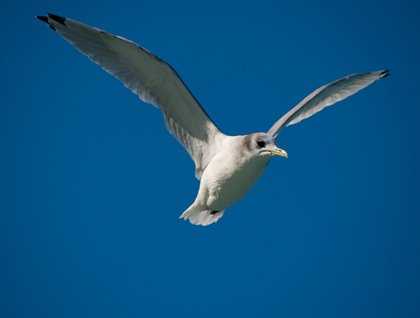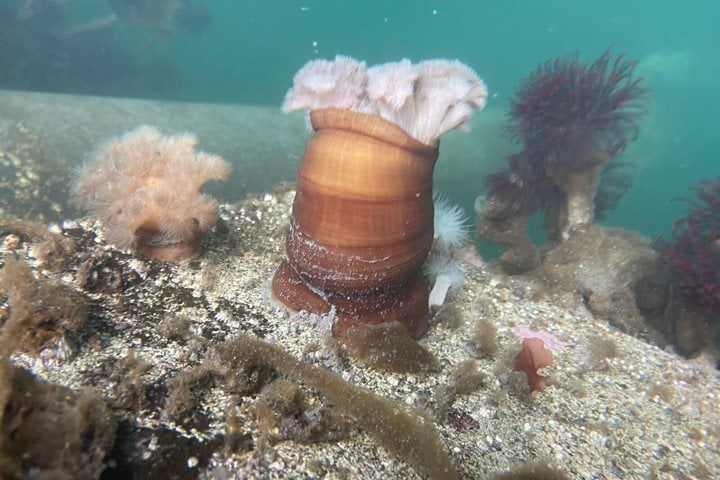Today we explored far northern Southeast Alaska. Icy Strait and Cross Sound, two joined waterways, empty and fill the whole watery region every time the tide changes. Tidal currents race dangerously. But they also lift nutrients to the sunlit surface. Additionally, the glaciers of Glacier Bay National Park dump huge quantities of rock dust into the sea. Together, these make Icy Strait perhaps the most productive waters on the Northwest Coast.
We awoke under pink-tinged clouds among the Inian Islands. This archipelago stands right in the middle of the Sound and Strait, so currents around these islands are particularly strong. The sea is churned into a dilute chowder, and creatures come from far and wide to feast. Soon after breakfast we hopped into our little rubber boats to have a close look at some of them. We found sea otters, engagingly busy preening their incomparable fur coats, and feeding voraciously to fuel their churning metabolism. We also found sea lions. These, not the goofy barkers of California, spoke in throaty growls, for they are the original lions of the sea, huge and splendid. Any sea lion looks a bit awkward on the land. Though far more adroit than seals, they lumber and lie like heaps of animated laundry. But once in the sea they fly with the grace of ballerinas and the power of a buffalo bull.
In the afternoon we visited the north shore of Chichagof Island. One of Southeast Alaska’s “ABC islands,” Chichagof is interesting in what it lacks–no black bears, no wolves, no mountain goats, no squirrels–at least until recently. We walked over raised beach swales through meadows rank and weedy with the culmination of summer. Once in the forest we walked over former bear trails. Perhaps most impressive were the streams which shook with the splashing of salmon. Everywhere this part of the world seems to be celebrating summer’s largess with thoughts of coming winter paucity. Meanwhile, kayakers paddled around a pair of nearby islets. They peered down from the “treetops” of Alaska’s other forest, the forest of kelp, which holds as many intricacies as the more familiar terrestrial one.







